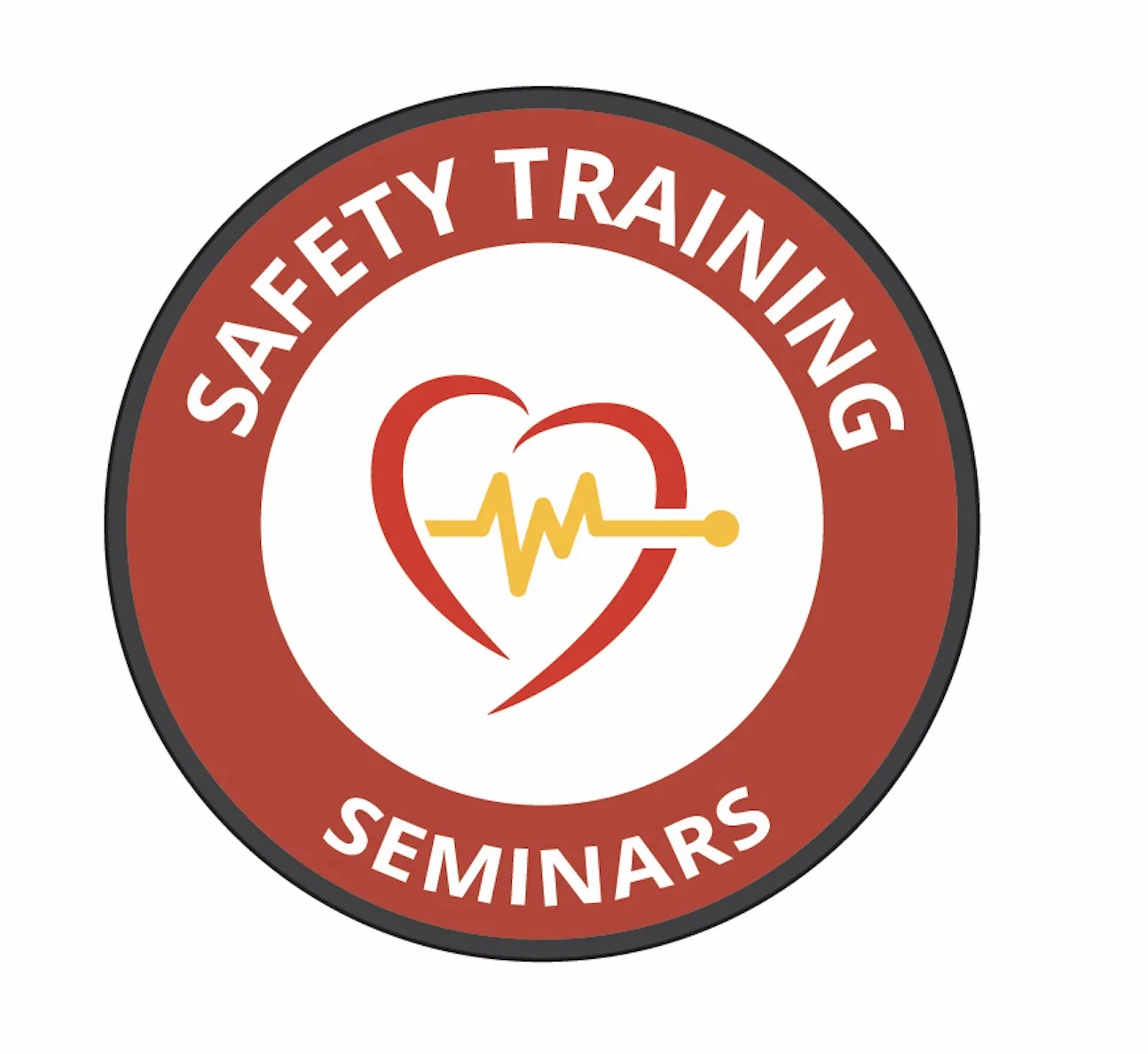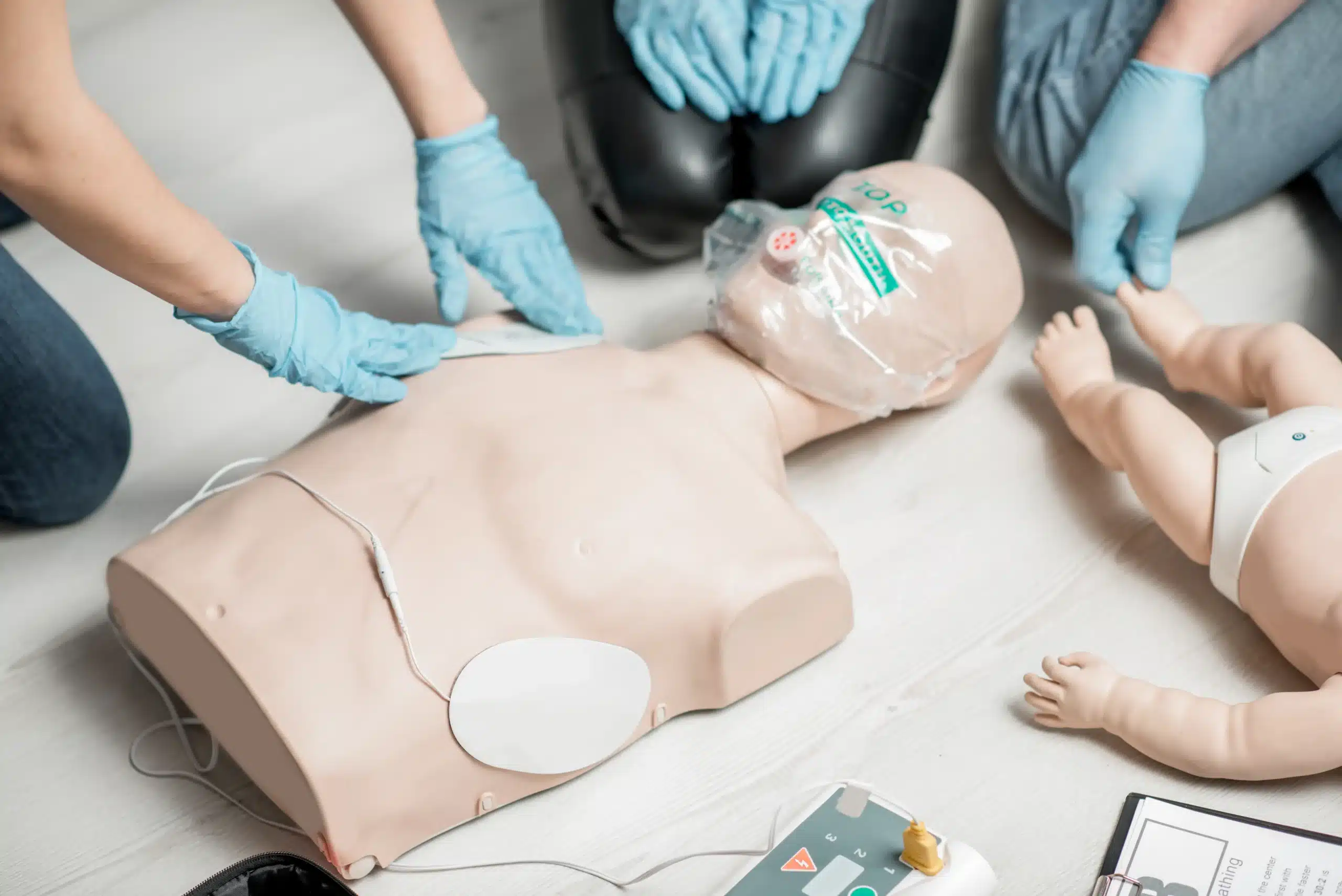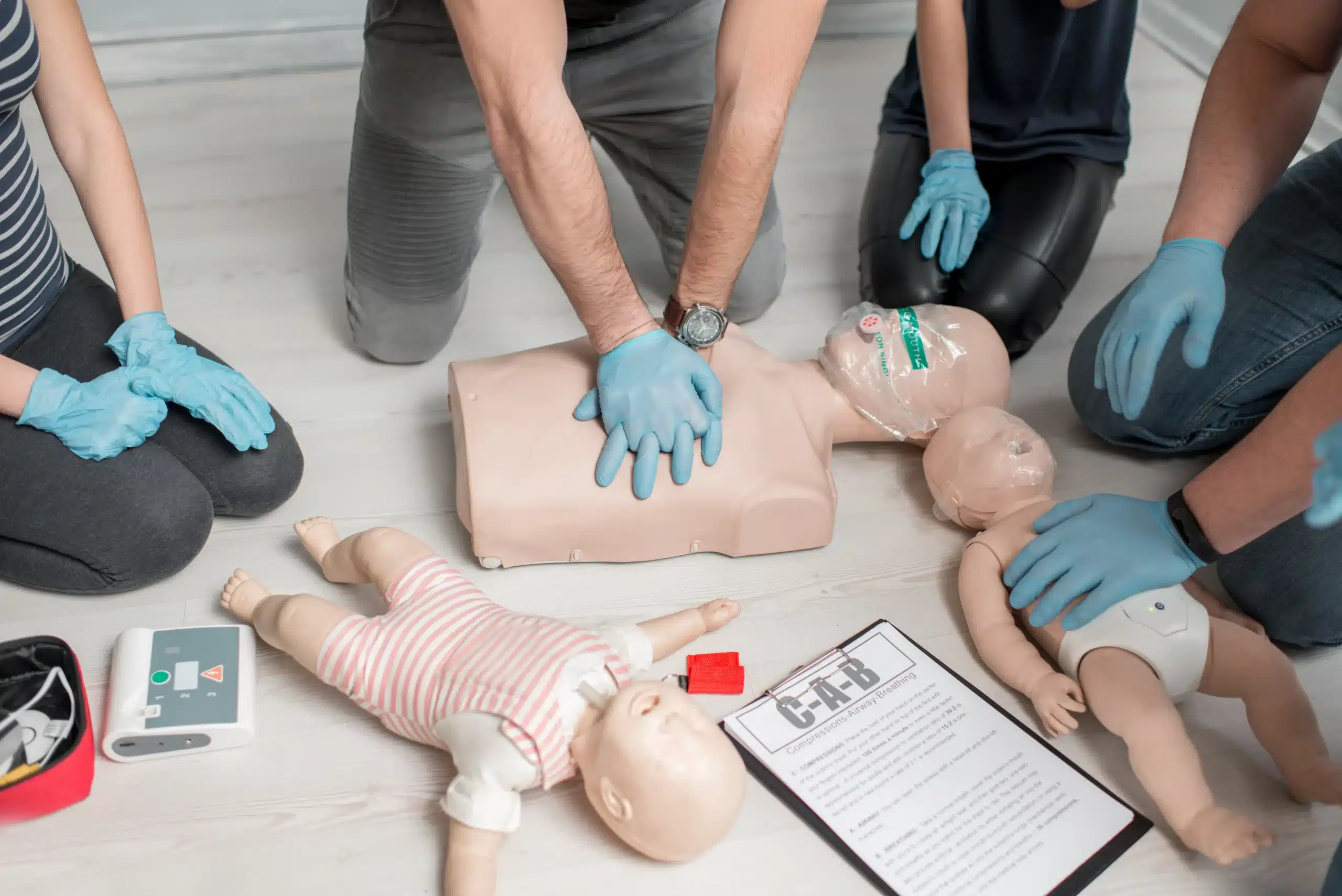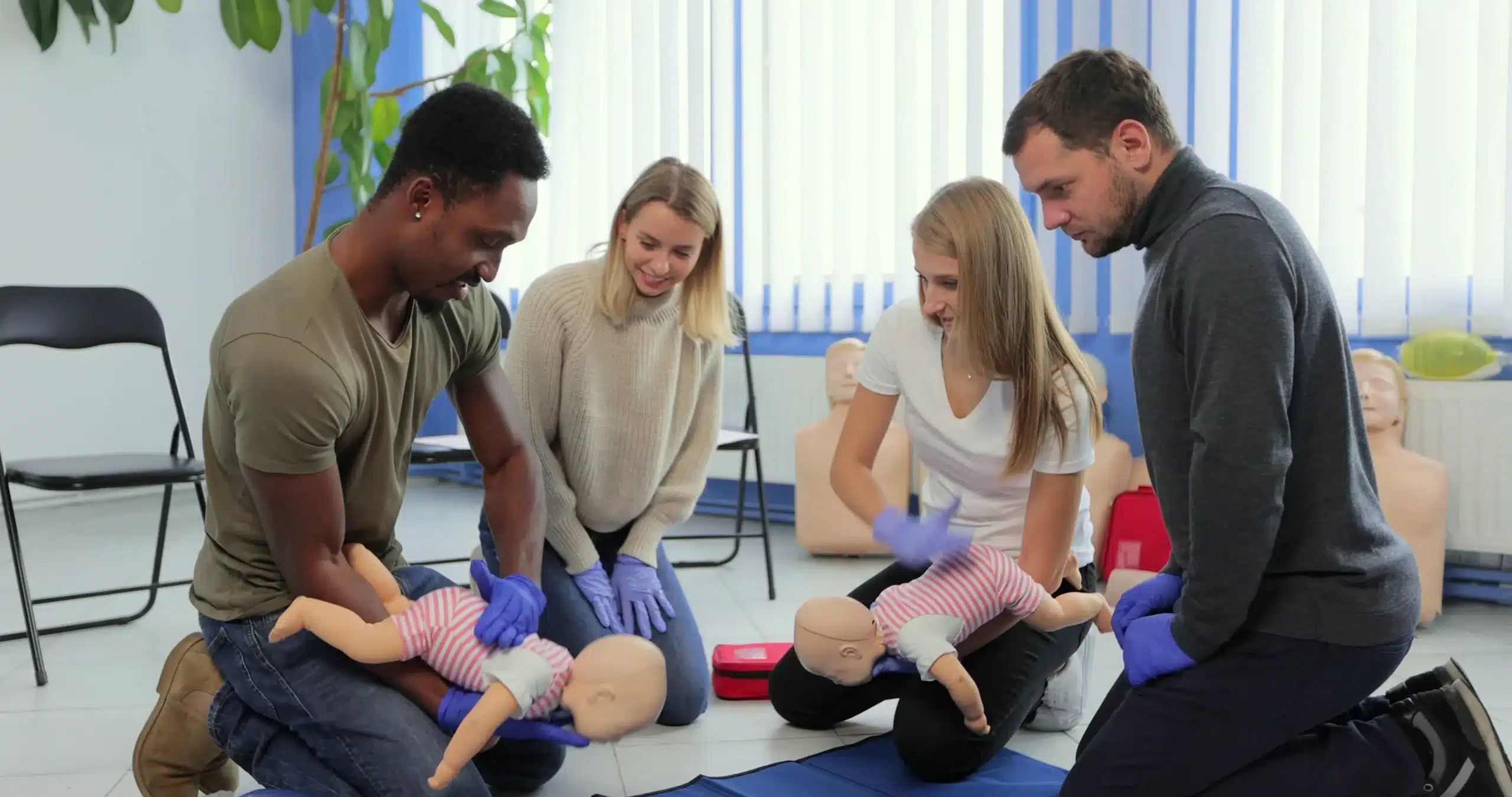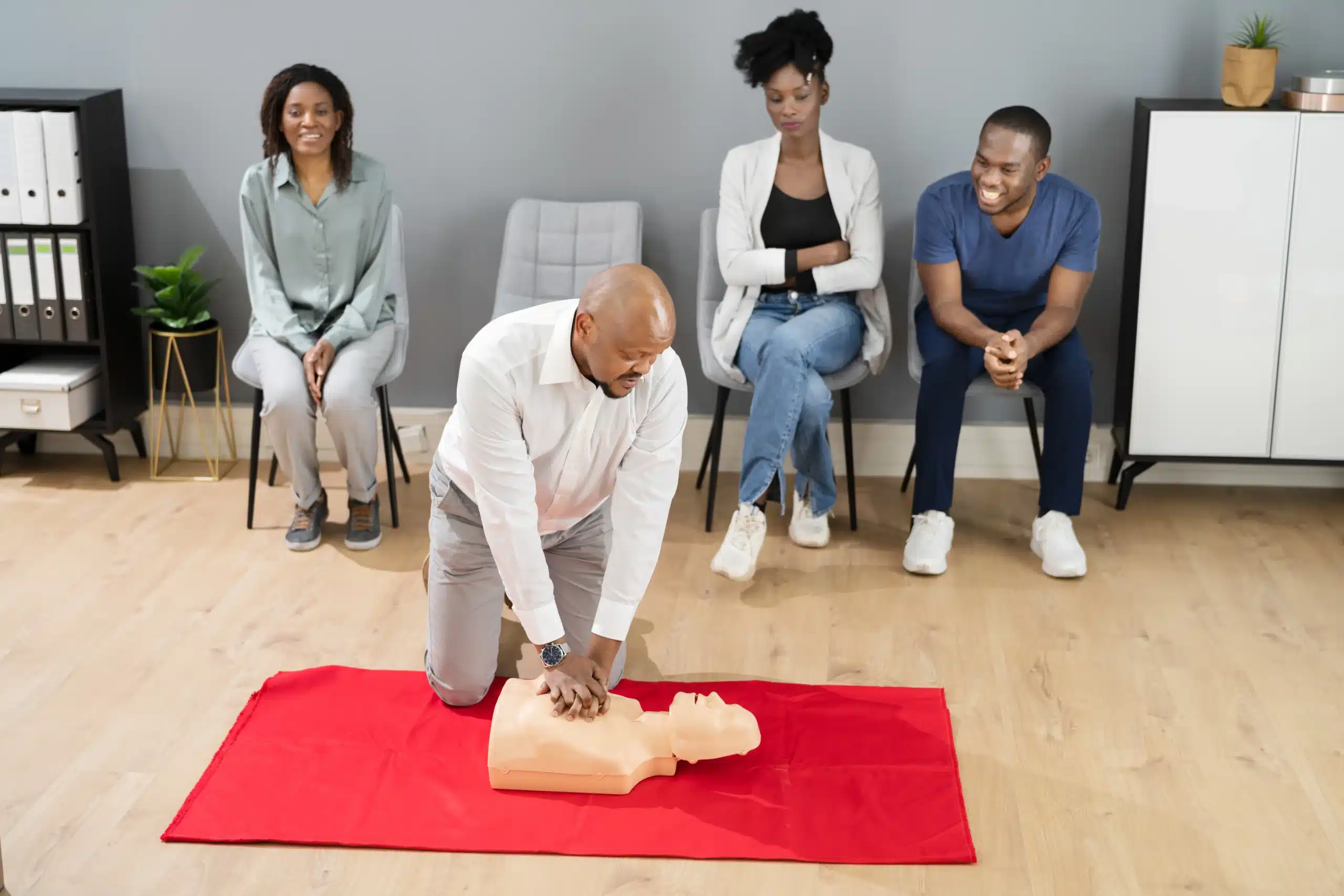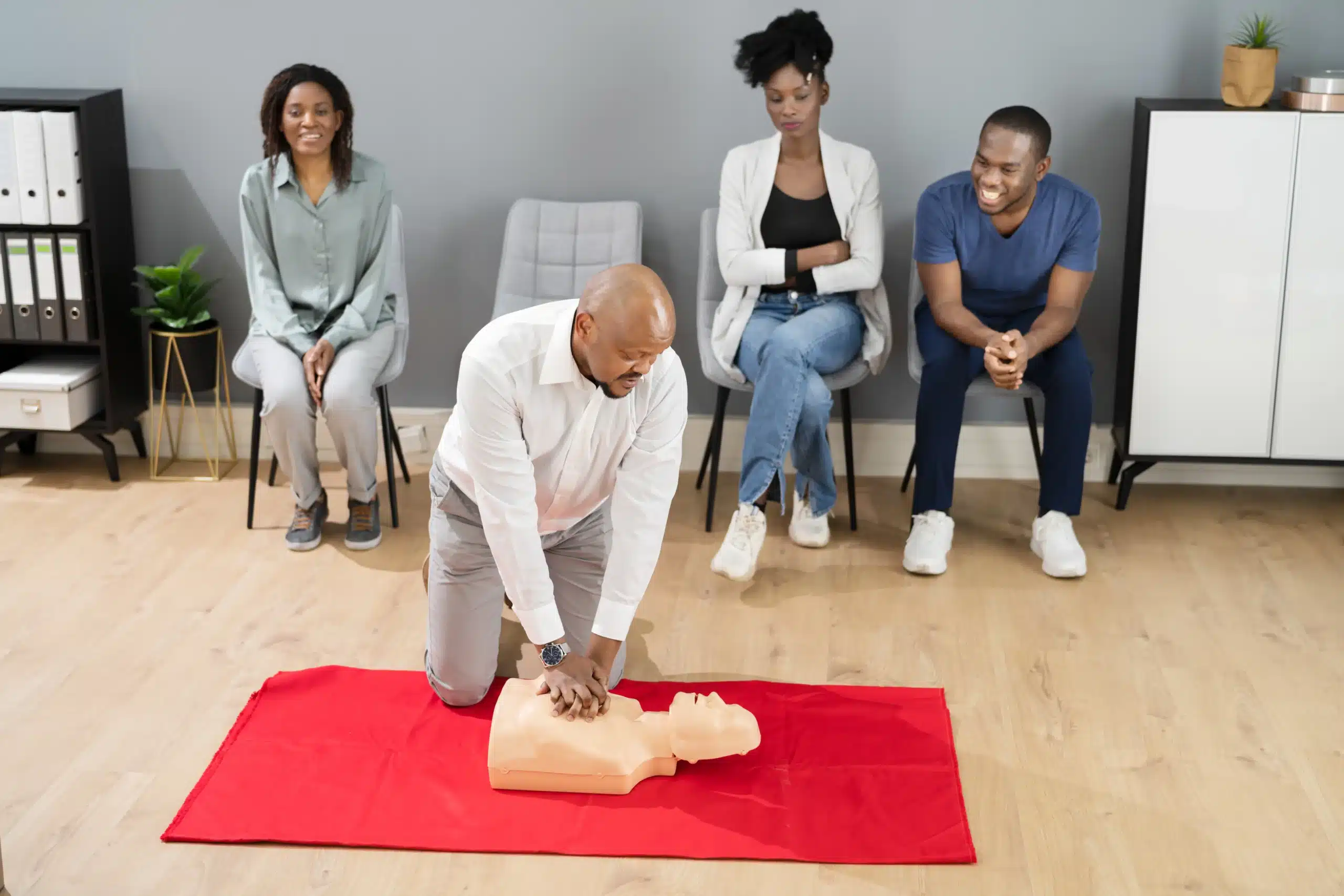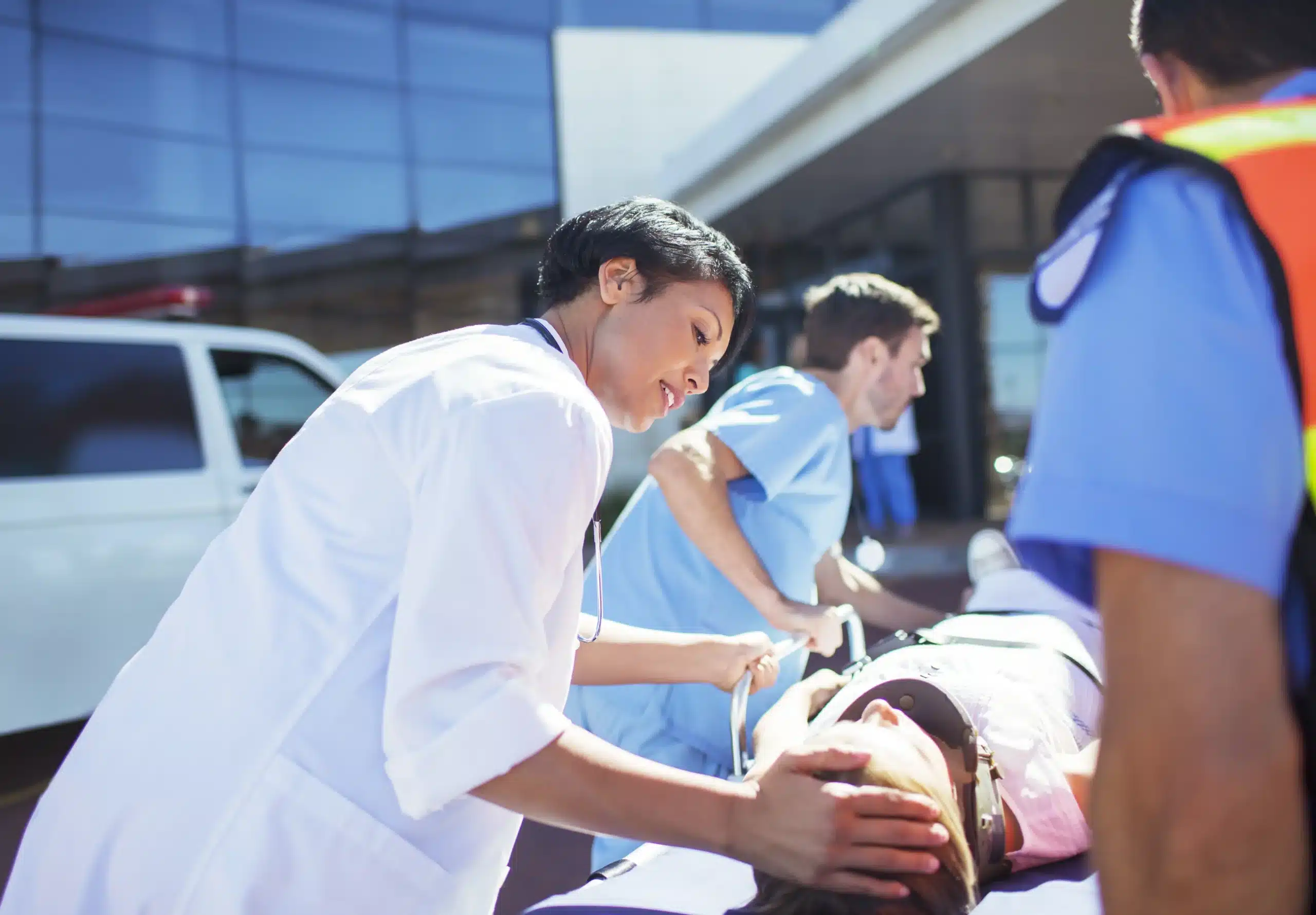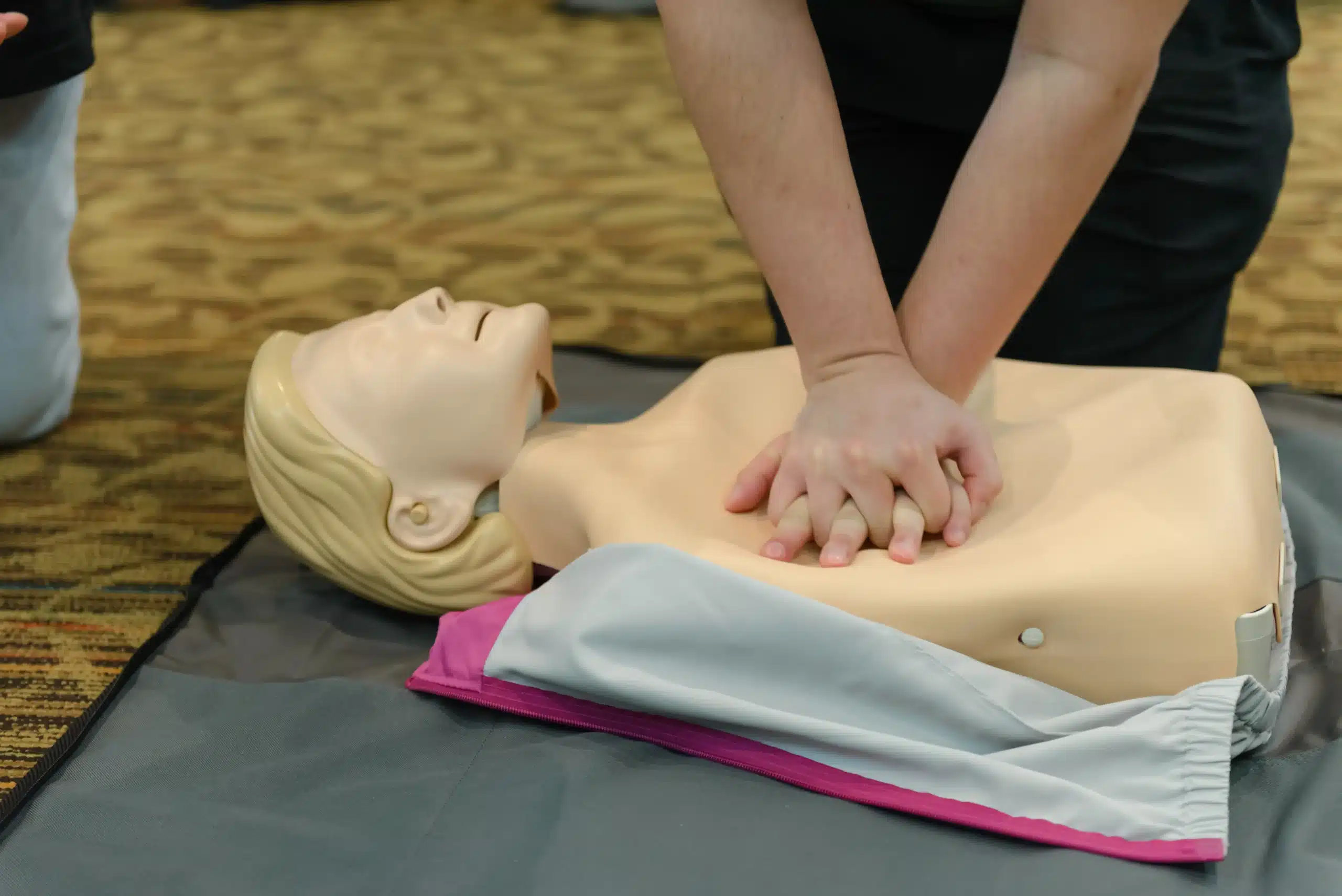Empowering yourself with life-saving skills shouldn’t break the bank. If you’re looking for affordable CPR training in San Francisco, you’re in the right place. This article is your comprehensive guide to finding discount CPR classes in San Francisco without compromising on quality. We’ll explore various CPR class types, discuss costs, and highlight reputable training providers in the Bay Area. We’ll also delve into the benefits of discounted CPR training, address common concerns about affordability versus quality, and offer practical tips for preparing for your class and maintaining your certification.
Key Takeaways
- Affordable CPR training is within reach: Discounted classes offer the same high-quality instruction as full-price options, making life-saving skills accessible to everyone. Seek out reputable providers offering AHA-certified courses, including BLS, ACLS, and PALS.
- Find the perfect CPR class: Consider your personal goals, schedule, and budget when selecting a class. Explore providers like Bay Area CPR, known for flexible scheduling and convenient Bay Area locations. Check instructor qualifications and class size for a valuable learning experience.
- Prepare for class and stay current: Understand the CPR class format and any dress code or material requirements. Remember that certifications expire—stay up-to-date with your training to maintain your life-saving skills.
What is CPR?
Cardiopulmonary resuscitation (CPR) is a lifesaving technique used when someone’s heart stops beating. This condition, called cardiac arrest, requires immediate action to restore blood flow to the brain and other vital organs. CPR typically involves chest compressions, sometimes combined with rescue breaths, to get the heart pumping and oxygen circulating again.
The American Heart Association explains CPR as a crucial link in the Chain of Survival, highlighting how essential quick action is in emergencies. If you’re untrained or feel hesitant, “hands-only CPR” is a good option. This simplified method focuses solely on chest compressions and is highly effective for teens and adults. For children and infants, the combination of chest compressions and rescue breaths is still recommended, as detailed in Health’s guide to CPR.
Learning CPR builds confidence to handle emergencies. The American Red Cross emphasizes that CPR training is beneficial for everyone, empowering individuals to respond effectively during cardiac events. Taking a CPR class equips you with the skills and knowledge to potentially save a life. Bay Area CPR offers a range of CPR certification courses throughout the San Francisco Bay Area, making it easier than ever to become trained and prepared.
CPR Class Types and Costs
Knowing which CPR class is right for you depends on your individual needs and goals. Let’s break down the most common types of CPR classes offered in the San Francisco Bay Area and what you can expect to pay. Keep in mind that pricing can vary based on the provider, so it’s always a good idea to check directly with the organization offering the CPR training.
Basic CPR
Basic CPR classes cover the essentials of adult, child, and infant CPR. You’ll learn how to recognize the signs of a cardiac arrest, perform chest compressions, and provide rescue breaths. These foundational life-saving skills empower you to respond effectively in a cardiac emergency. Many basic CPR courses also include training on how to use an automated external defibrillator (AED). Basic CPR certification is often a prerequisite for more advanced courses. In San Francisco, basic CPR classes typically range from $75 to $125.
CPR with First Aid
CPR with First Aid classes combine the life-saving techniques of CPR with essential first aid skills. This comprehensive training prepares you to handle a wider range of emergencies, from cardiac arrest to cuts, burns, and fractures. You’ll learn how to assess injuries, control bleeding, manage shock, and administer basic wound care. This combined CPR and First Aid certification is particularly valuable for those working in childcare, education, or other fields where diverse emergencies might arise. Expect to pay between $100 and $150 for a combined CPR and First Aid class.
Advanced Life Support
Advanced Life Support (ALS) courses, such as ACLS (Advanced Cardiovascular Life Support) and PALS (Pediatric Advanced Life Support), are designed for healthcare professionals. These courses delve into more complex medical emergencies and require a higher level of knowledge and skill. ALS training covers topics like airway management, intravenous access, and pharmacological interventions. These certifications are typically required for doctors, nurses, paramedics, and other healthcare providers. The cost of ALS courses is generally higher, ranging from $150 to $250 or more, depending on the specific certification and provider. Bay Area CPR offers a range of American Heart Association-certified courses, including BLS, ACLS, and PALS.
Top Discounted CPR Class Providers in San Francisco
Finding the right CPR class can feel overwhelming with so many options. To simplify your search, I’ve compiled a list of reputable CPR training providers in San Francisco, highlighting what makes each stand out. Whether you’re looking for basic CPR certification or more advanced training, this list will help you find a course that fits your needs and budget.
Bay Area CPR
Bay Area CPR offers a variety of American Heart Association (AHA) certified courses, including BLS, ACLS, PALS, and Wilderness First Aid. Known for flexible scheduling and numerous locations across the Bay Area, they make it easy to find a class that works for you. Check their website for the latest course schedules and any discounts.
American Red Cross
The American Red Cross is a well-known provider of CPR and First Aid training. They offer various courses to meet different needs, and their prices vary depending on the specific class and any available discounts. Visit the American Red Cross website to explore their offerings and find a class near you.
Safety Training Seminars
Safety Training Seminars provides comprehensive CPR training with experienced instructors. They offer competitive pricing on several AHA-certified courses, including BLS, ACLS, and PALS. Their focus on affordability makes them a practical option for both individuals and groups. Learn more about their courses and pricing on the Safety Training Seminars website.
Revive CPR
Revive CPR offers attractive group discounts, sometimes up to 30% off, making them an excellent choice if you’re getting certified with coworkers or friends. They provide AHA-certified courses, including BLS, CPR, and First Aid. Check out Revive CPR’s website for more information on group rates and available courses.
San Francisco Fire Department
The San Francisco Fire Department (SFFD) frequently offers community CPR classes to help residents develop essential life-saving skills. These classes are often provided at low or no cost, making them a valuable community resource. Keep an eye on the SFFD website or your local community center for announcements about upcoming CPR training.
CPR Education
CPR Education offers various CPR training options and provides discounted rates for nonprofits and groups. Their commitment to accessibility makes them a great option for organizations and community groups. Visit the CPR Education website to learn more about their discounted programs and available courses.
Find the Best CPR Class Deals
Getting certified in CPR doesn’t have to break the bank. Knowing where to look can help you access high-quality training at a reduced cost. Here’s how to find the best CPR class deals in San Francisco:
Current Promotions and Seasonal Discounts
Many CPR training providers, like Safety Training Seminars, offer promotions throughout the year. Check their websites for current deals on CPR, BLS, ACLS, and PALS certification courses. They’re known for competitive pricing in the Bay Area, so it’s a good starting point for your search. It’s also worth checking for seasonal discounts around holidays or awareness campaigns.
Group Rates and Special Offers
If you’re planning on getting certified with a group, group discounts can significantly lower the individual cost. Group CPR training often comes with special offers. For example, Revive CPR offers discounts up to 30% for groups of three or more. Contact providers directly to ask about group rates and package deals.
Student and Senior Discounts
Students and seniors can often find discounted rates on CPR classes. Bay Area CPR offers reduced prices for students enrolled in medical, dental, nursing, and EMT programs. Revive CPR also provides student discounts—check their website for current promotions on their BLS classes. Ask your chosen provider about student or senior discounts to make these essential lifesaving skills more accessible.
Evaluate Discounted CPR Class Quality
Finding a discounted CPR class is great, but ensuring the quality of the training is key. Here’s what to look for:
Instructor Qualifications and Experience
Instructors should be certified by a recognized organization like the American Heart Association (AHA). Safety Training Seminars, a woman-owned AHA Training Center in the Bay Area, emphasizes the importance of qualified instructors for high-quality courses. Look for instructors with extensive experience, especially in real-world scenarios. Their practical insights can significantly improve your learning. Don’t hesitate to ask about an instructor’s background and certifications before signing up.
Certification Recognition and Validity
A discounted class is only valuable if the certification is widely accepted. The AHA sets the standard for CPR and related certifications like BLS, ACLS, and PALS. Make sure the class you choose aligns with these standards and will be recognized by your employer or any relevant organization. For example, CPR Classes in Oakland stresses the importance of recognized accreditation to meet workplace requirements.
Class Size and Hands-on Practice
CPR is a hands-on skill. While discounted group CPR training can be a good option, be sure the class size allows for ample practice time on mannequins. Smaller classes, like those offered by the American Red Cross, often provide more personalized attention and feedback, which can be crucial for mastering the techniques. Check if the class includes practice with AEDs (Automated External Defibrillators), as these are essential life-saving tools.
Benefits of Discounted CPR Classes
Getting CPR certified can feel like a big undertaking, but it doesn’t have to be expensive. Discounted CPR classes offer significant advantages, making these essential skills accessible to everyone. Let’s explore some key benefits:
Save Money Without Compromising Quality
One of the most appealing aspects of discounted CPR classes is the cost savings. Many reputable providers, like Bay Area CPR, offer competitive pricing on essential training, including BLS, ACLS, and PALS certification. This makes high-quality instruction more affordable for individuals and organizations. As Safety Training Seminars points out in their CPR Training Guide, you can find excellent deals on CPR classes without sacrificing the quality of your training. Look for certified instructors and accredited programs to ensure you’re receiving valuable, up-to-date information.
Flexible Scheduling
Juggling work, family, and other commitments can make finding time for CPR training a challenge. Discounted CPR classes often come with flexible scheduling options, including weekend and evening courses. This makes it easier to fit training into your schedule without major disruptions.
Community Preparedness and Empowerment
Learning CPR alongside others creates a sense of community and shared purpose. Group discounts often encourage friends, families, or colleagues to train together. This strengthens community bonds and contributes to a more prepared and resilient environment. When more people know how to respond to emergencies, everyone benefits. It fosters a culture of preparedness and empowers individuals to take action when it matters most. Safety Training Seminars offers discounts for group CPR training.
Free & Low-Cost CPR Training in the Bay Area
Finding significantly discounted or free CPR classes can be tricky. Providing quality instruction involves real costs—certified instructors, equipment like AEDs and mannequins, and licensing fees all add up. While completely free, certified CPR courses are rare in the Bay Area, there are a few avenues you can explore.
Community Programs and Nonprofits
Occasionally, community organizations and nonprofits like the American Red Cross or American Heart Association sponsor free CPR training events. These are often one-time events like a “CPR Saturday.” While these community events offer a valuable introduction to CPR, they typically don’t provide official CPR certification. If your goal is to become certified, these events are best used as a starting point for your research and training. For official certification, consider checking out CPR class options with Bay Area CPR.
Online Resources and Blended Learning
Many online resources offer free CPR learning materials. These can be helpful for familiarizing yourself with the basics, but be aware that online-only CPR certifications are generally not accepted for professional licensing or employment requirements. Hands-on practice and in-person evaluation are essential for mastering CPR skills. A blended learning approach—combining online study with in-person training—can be a good option, but make sure the program offers a recognized CPR certification. Bay Area CPR offers a variety of CPR courses that meet certification requirements.
Local Health Department Initiatives
Check with your local health department for potential low-cost CPR training opportunities. County health departments sometimes offer discounted or subsidized programs for residents. Also, keep an eye out for CPR courses offered by established providers like Bay Area CPR, the American Red Cross, and other training centers in your area. These organizations often have competitive pricing and may offer discounts for certain groups. For example, Safety Training Seminars provides a range of AHA-certified courses, including CPR, BLS, ACLS, and PALS, along with First Aid and EMSA certifications. Doing a little research can help you find a reputable provider that fits your budget. You can explore various CPR and First Aid classes offered by Bay Area CPR.
Choose the Right CPR Class
Finding the right CPR class isn’t just about ticking a box; it’s about equipping yourself with the skills to potentially save a life. The best class for you will depend on several factors. Let’s break down how to choose the perfect fit.
Assess Your Needs and Goals
First, think about why you’re taking a CPR class. Are you fulfilling a job requirement, preparing for a specific situation (like becoming a parent or caregiver), or simply wanting to be prepared for emergencies? Your reason will influence the type of class you need. For example, healthcare providers often require ACLS certification, while a general community member might opt for a basic CPR and First Aid course. Think about how this training will fit into your broader goals.
Next, consider logistics. How much time can you realistically commit to training? Where is the class located? Bay Area CPR offers classes throughout the Bay Area, including San Francisco, Daly City, San Mateo, and Oakland, with various schedules and price points to help you find something that works.
Research Provider Reputation and Reviews
Once you have a general idea of the type of class you need, research different providers. Look for established providers with a strong track record, like Bay Area CPR. Reading reviews from past students can give you valuable insights. Don’t hesitate to ask providers for references or testimonials, which can offer a more personal perspective on the quality of instruction and the overall learning experience.
Also, check if the provider is certified by a reputable organization like the American Heart Association. This ensures the training meets nationally recognized standards. Safety Training Seminars is another reputable provider offering comprehensive CPR training in San Francisco. Verify the credentials and affiliations of any provider you’re considering.
Compare Course Content and Duration
Not all CPR classes are created equal. Some focus solely on CPR, while others incorporate first aid or AED training. Compare course content to ensure it aligns with your needs. The course duration can also vary. Some are condensed into a single day, while others are spread out over multiple sessions. Consider your learning style and choose a format that suits you best. As Safety Training Seminars points out, pricing can vary based on the provider, the type of course, and whether you choose online or in-person instruction. So, compare options before making a decision. Think about what you want to achieve with your certification and choose accordingly.
Prepare for Your CPR Class
So, you’ve signed up for a CPR class—great! Now, let’s make sure you’re totally prepared. Knowing what to expect beforehand can help you feel confident and ready to learn these lifesaving skills.
What to Expect During Training
CPR classes typically involve a combination of interactive lectures, demonstrations, and hands-on practice. Your instructor will guide you through the steps of CPR, emphasizing proper technique and the importance of quick action in emergencies. Expect to learn about chest compressions, rescue breaths, and how to recognize the signs of a cardiac arrest. You’ll also likely learn how to use an automated external defibrillator (AED). Don’t be afraid to ask questions—your instructor is there to help you master these skills. Many courses, like those offered by the American Red Cross, also integrate CPR training into their first aid certification.
Required Materials and Dress Code
Most CPR classes don’t require you to bring anything specific. The training provider usually supplies all the necessary equipment, including mannequins for practice. However, it’s always a good idea to check with your chosen provider beforehand, just in case. As for dress code, comfortable clothing is key. You’ll be moving around and practicing on the floor, so comfortable athletic wear or casual clothes are ideal. Avoid anything too restrictive or that you wouldn’t want to get slightly dirty. Expect some differences in pricing depending on the organization offering the course (American Red Cross, American Heart Association, etc.), the type of course (basic first aid, CPR/AED, or more advanced certifications), and whether you choose online or in-person instruction.
Certification Maintenance and Renewal
After completing your CPR class, you’ll receive a certification card. This card is proof that you’ve completed the training and are qualified to perform CPR. However, these certifications do expire, typically every two years. It’s essential to stay up-to-date with your certification to ensure you’re always prepared to respond effectively in an emergency. Check with your certifying organization, such as the American Heart Association or the American Red Cross, for specific renewal requirements and how to find a renewal course near you. Staying current with your CPR skills could make all the difference in a critical situation.
Common Misconceptions About Discounted CPR
Let’s clear up some common misconceptions about discounted CPR classes. A lower price tag doesn’t necessarily mean lower quality training.
Address Quality Concerns
Some people worry that discounted CPR classes cut corners. This isn’t the case with reputable providers. Anyone can learn and perform CPR—it’s not just for medical professionals. High-quality, discounted CPR classes use the same American Heart Association guidelines as more expensive options, ensuring comprehensive training regardless of price. Dispelling these myths is crucial, as hesitation in emergencies can have serious consequences. CPR training empowers individuals to take action and potentially save lives.
Understand Certification Validity
Another concern is certification. While free CPR training sometimes exists through community events, these often don’t provide an official certification card. A legitimate certification is essential for many jobs and licensing requirements. Be wary of online-only CPR certifications, as these are generally not accepted. Always verify that a discounted class offers a valid, recognized credential, like those from the American Heart Association.
Dispel Myths About Instructor Expertise
Finally, some assume discounted classes mean less experienced instructors. This isn’t necessarily true. Reputable training centers, regardless of price, employ qualified instructors who stay up-to-date on the latest CPR practices, including the current emphasis on compression-only CPR by the American Heart Association. So, rest assured that you can find knowledgeable instructors even in a discounted CPR class. Accurate information about CPR empowers individuals to act confidently in emergencies.
Frequently Asked Questions
What’s the difference between “hands-only CPR” and regular CPR?
Hands-only CPR focuses solely on chest compressions, while regular CPR involves both chest compressions and rescue breaths. Hands-only CPR is often recommended for untrained bystanders assisting teens and adults, while regular CPR with breaths is still the standard for infants and children. Both methods aim to restore blood circulation and are valuable skills to learn.
How much do CPR classes typically cost in San Francisco?
The cost of CPR classes in San Francisco varies depending on the type of class and the provider. Basic CPR classes usually range from $75 to $125, while CPR and First Aid combined courses typically cost between $100 and $150. More advanced certifications like ACLS and PALS for healthcare professionals are generally more expensive, ranging from $150 to $250 or more. Remember to check with specific providers for their current pricing and any available discounts.
How can I find discounted or free CPR classes in the Bay Area?
While completely free CPR classes that offer official certification are rare, you can sometimes find low-cost options through community programs, local health departments, or occasional events sponsored by organizations like the American Red Cross. Keep an eye on community center announcements and local health department websites for these opportunities. Also, many CPR training providers offer discounts for groups, students, or seniors, so be sure to ask about those.
What should I look for when choosing a CPR class?
When choosing a CPR class, consider your specific needs and goals. Think about why you need CPR training and what kind of certification you require. Research different providers, checking their reputation, instructor qualifications, and the type of certification they offer. Make sure the certification is recognized by your employer or any relevant organization. Also, consider the class size, the amount of hands-on practice time, and the overall course content to ensure it aligns with your learning style and objectives.
How often do I need to renew my CPR certification?
CPR certifications typically expire every two years. It’s essential to renew your certification to maintain your skills and ensure you’re prepared to respond effectively in an emergency. Check with your certifying organization (like the American Heart Association or American Red Cross) for specific renewal requirements and how to find a renewal course near you.
